1. He’s Just Known as Wyland
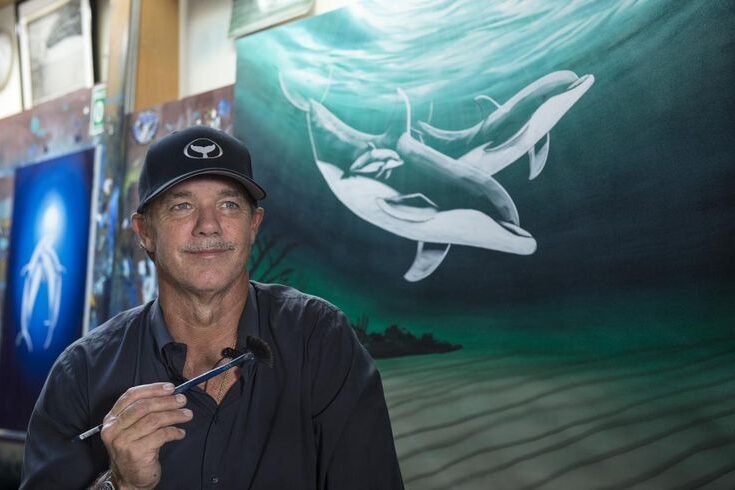
You’ve probably seen the name “Wyland” sprawled across giant ocean murals, but that’s not the full story. Born Robert Wyland in 1956 in Detroit, he dropped his first name early on and made “Wyland” his signature. It wasn’t just a branding move. It was a statement. “I wanted the art to stand alone,” he once shared. And it does. His name became as bold and memorable as the massive whales he paints. Today, seeing “Wyland” means something. It’s not just an artist’s tag. It’s a reminder of his mission to bring nature to city walls and the ocean into our daily lives.
2. He Was Inspired by Jacques Cousteau
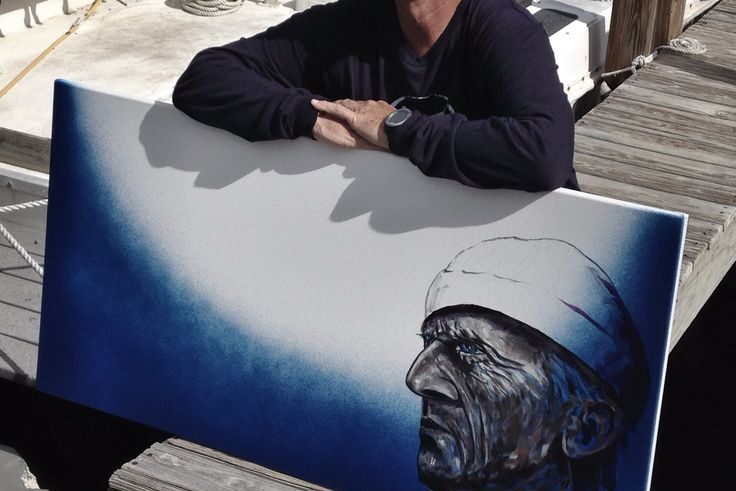
Like many of us glued to the TV as kids, Wyland found inspiration in someone else’s adventures. For him, it was Jacques Cousteau. The legendary ocean explorer and filmmaker opened up the underwater world in ways no one else had. “He took me to the ocean before I ever saw it,” Wyland recalled. That early exposure to the mysteries of marine life stuck with him, shaping his life’s work. Watching Cousteau dive among dolphins and whales planted a dream in young Wyland’s heart. He wanted to capture that beauty through art and help protect what so many people take for granted.
3. He Painted His First Whale Wall in 1981

Sometimes the biggest ideas come from quiet beginnings. Wyland was living in Laguna Beach when he painted his first life-sized whale mural on the side of a small building. The year was 1981, and the piece featured a gray whale mid-dive. Passersby didn’t just like it. They were moved by it. “People would stop and talk about the whales,” Wyland said. That moment became the spark for what he’d later call the Whaling Walls. That first mural didn’t just brighten a blank wall. It opened up a conversation about marine life, conservation, and how art could speak louder than words ever could.
4. He Completed 100 Whale Murals Around the World

What started with one wall in California turned into a global campaign. Over 27 years, Wyland completed 100 massive public murals of marine life across five continents, from the United States to Australia to Japan. Each piece showcased local sea creatures and environmental themes. His 100th and final official Whaling Wall was completed in Beijing in 2008, just in time for the Olympics. Wyland called it a “promise to the planet.” But don’t think that milestone marked an ending. It was more like a turning point. Even now, he continues creating, teaching, and using every wall as a platform for change.
5. Some of His Murals Are Over 100 Feet Tall
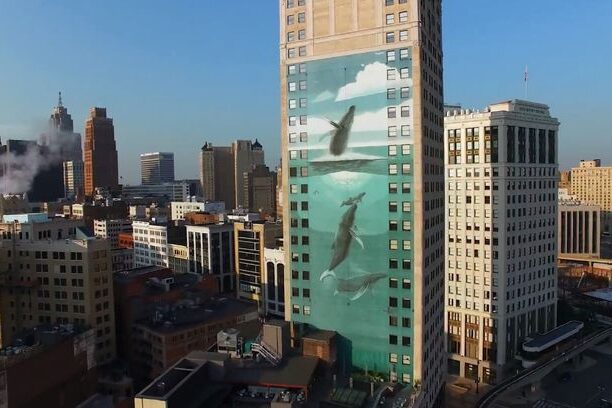
If you’ve ever stood in front of one of Wyland’s murals, you know the feeling. It’s like staring up at a moving wall of ocean. Some of his pieces are over 100 feet tall, painted across entire buildings, stadiums, and city centers. One of the largest, in Long Beach, California, stretches over 116,000 square feet. “I need a lot of paint and a very long ladder,” Wyland once joked. But behind the humor is purpose. He believes the bigger the mural, the bigger the message. When a humpback whale fills your skyline, it’s hard not to stop and really take notice.
6. He’s Also an Author and Conservationist
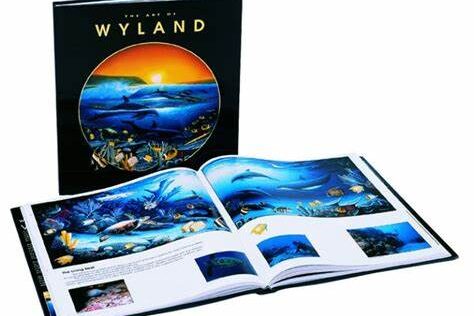
Wyland’s creativity doesn’t end at the edge of a wall. He’s also written dozens of books, including children’s stories, art guides, and conservation workbooks that help kids and adults connect to the environment. In 1993, he founded the Wyland Foundation, which focuses on ocean awareness and clean water education. Through it, he creates programs that reach schools and communities. “Art and science go hand in hand,” he often says. His words aren’t just poetic. They’re practical. Whether he’s writing a book about sea turtles or organizing water-saving challenges, Wyland blends creativity and conservation in a way that truly connects with people.
7. His Art Has Been Featured on U.S. Postage Stamps

In 2001, the U.S. Postal Service gave Wyland’s whales a new kind of canvas: postage stamps. His artwork was chosen for a special series that celebrated ocean life, making him one of the few muralists to be featured on national stamps. It wasn’t just an artistic honor. It was a way to send his message to millions of homes across the country. “A postage stamp is small,” Wyland said, “but it can carry a big message.” And it did. That little square of marine blue didn’t just decorate envelopes. It delivered inspiration, awareness, and a reminder of what’s worth protecting every day.
8. He Uses Art to Educate Millions of Kids
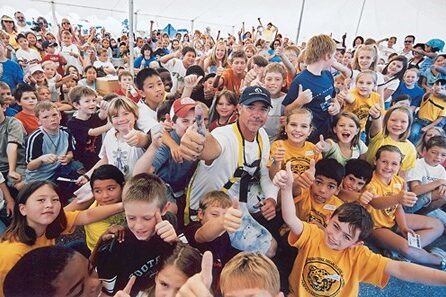
Walk into a school art class or water-saving campaign in the U.S., and there’s a good chance you’ll find Wyland’s name somewhere on it. Through the Wyland Foundation, he’s reached over one million children with hands-on programs that mix art and environmental education. Kids are encouraged to draw ocean scenes, participate in contests, and learn about clean water. It’s not just about painting. It’s about planting seeds. “When kids create, they care,” Wyland said in an interview. And he’s right. By giving them a brush and a mission, he’s turning young students into the next generation of ocean defenders.
9. He Was Named a U.N. Ambassador for the Environment
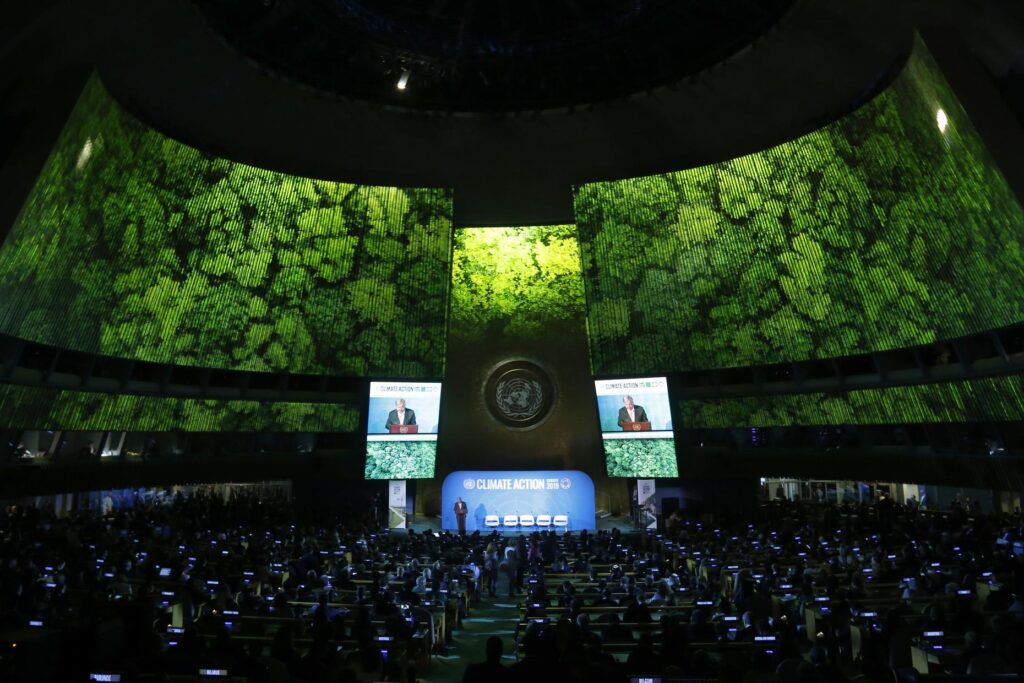
In 2008, Wyland was named Clean Water Ambassador for the United Nations Environment Programme, a rare honor for a visual artist. But he earned it by turning art into action. Through his global murals and education programs, he gave marine conservation a public voice. “Art has no language barrier,” he told Reuters, and that belief became his biggest strength. His work crossed borders without needing translation. Being recognized by the U.N. wasn’t just about his talent. It was about his influence. With every new project, he proved that creative expression can inspire real-world change, even at the highest levels of policy.
10. He’s Painted Underwater with Real Whales Nearby
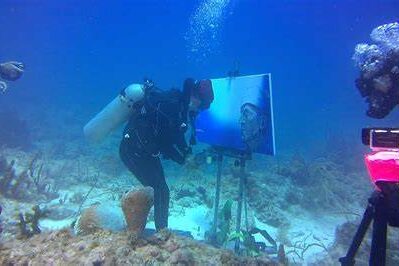
Few artists can say they’ve painted while surrounded by the very subjects they love most, but Wyland can. He’s taken his canvas underwater, scuba diving in tropical waters to sketch marine life in real time. Sometimes whales even swam nearby, adding a kind of magic that’s hard to fake. “You can’t pretend when you’re down there,” he once said. Being beneath the surface makes him feel more connected, more honest in his work. It’s not just a performance. It’s passion. His underwater painting sessions remind us that true commitment means going deep, literally and emotionally, for what you believe in.
11. He Believes Art Can Save the Planet

Wyland doesn’t see art as separate from the world. It’s part of it. To him, painting is a form of activism, a quiet but powerful way to change hearts. “Art is the voice of the planet,” he often says, and it’s not just a line. It’s his entire mission. His murals aren’t just beautiful. They make people pause and think. When you see a giant whale floating on a city wall, you’re reminded of what’s at stake. His goal isn’t fame or fortune. It’s awareness. Through every splash of color, he invites us to see the planet through a more caring lens.
12. His Legacy Is Still Growing
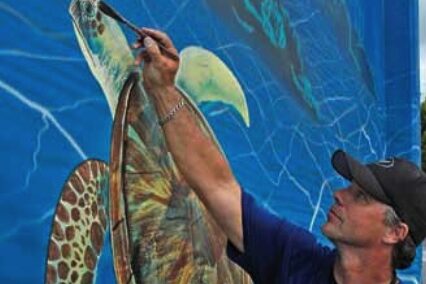
Even with over 100 murals completed, Wyland isn’t done yet. He’s still traveling, painting, mentoring, and finding new ways to use creativity for good. Museum exhibits, public installations, and environmental campaigns keep his calendar full, but it’s the younger generation that drives him most. He wants to pass the brush, to help others find their own artistic voice. “If one wall can change a city,” he said, “imagine what one artist can do.” That spirit is why his legacy continues to grow. His whales may be painted, but their message is alive, still swimming, still calling us to care a little deeper.
This story 12 Things You Didn’t Know About Wyland, the Whale Painter Who Turned Murals into a Movement was first published on Daily FETCH


